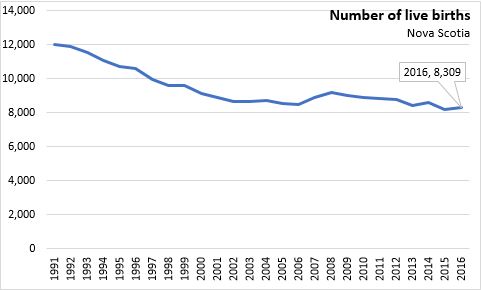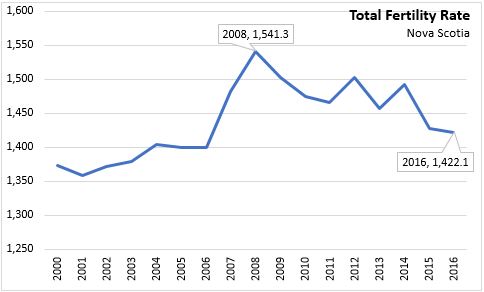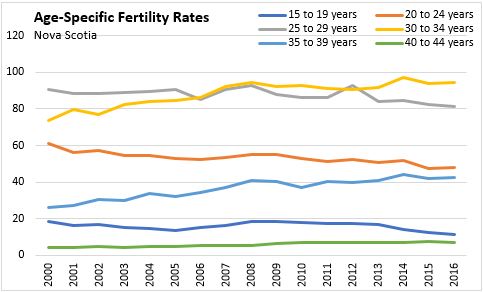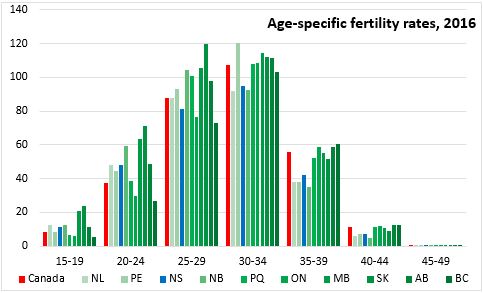The Economics and Statistics Division maintains archives of previous publications for accountability purposes, but makes no updates to keep these documents current with the latest data revisions from Statistics Canada. As a result, information in older documents may not be accurate. Please exercise caution when referring to older documents. For the latest information and historical data, please contact the individual listed to the right.
<--- Return to Archive
For additional information relating to this article, please contact:
April 30, 2018BIRTHS AND FERTILITY, 2015 AND 2016 Today, Statistics Canada released data on the number of births in Canada and the provinces for 2015 and 2016.
In Nova Scotia, the number of live births has been trending down since 1991, the earliest year for which data is available. In 2016, there were 8,309 live births to Nova Scotian mothers, up slightly from the 8,204 births in 2015. Together, these two years represent the lowest number of births in Nova Scotia since 1991.

The total fertility rate (TFR) is an estimate of the average number of live births that 1,000 females would have in their lifetime. In Nova Scotia, the TRF has been trending down since 2008, reaching 1,422.1 live births in 2016. British Columbia had the lowest TFR at 1,404 live births per 1,000 women, followed by Nova Scotia. Saskatchewan had the highest TFR for the sixteenth year in a row at 1,933.9 live births per 1,000 women. The Canadian average was 1,543.3 live births per 1,000 women in 2016, well below the natural replacement rate.

The decline in TFR since 2008 is reflected in fertility rates for women under the age of 30. Since 2008 fertility rates have been declining for women aged 15 to 29, while it has steadily increased for women age 30 to 49 in Nova Scotia. The increase in the TFR between 2000 and 2008 in Nova Scotia was largely due to increasing fertility rates for women aged 30 and over.

Although fertility rates have been rising for older women, they remain below the Canadian average. In 2016, Nova Scotia's age specific fertility rates were below the Canadian average for women aged 25 and over. Women in Nova Scotia aged 15 to 24 had fertility rates above the Canadian average.

In Nova Scotia, the infant mortality rate declined to 4.1 per 1,000 live births in 2015. The infant mortality rate made significant gains through the 1980s and 90s, and has fluctuated around 4 since 2000. The infant mortality rate in Canada was 4.5 per 1,000 live births in 2015, ranging from a low of 2.2 in Prince Edward Island to a high of 6.4 in Manitoba.
Daily Release | CANSIM 102-0030, 102-4503 and 102-4505
<--- Return to Archive